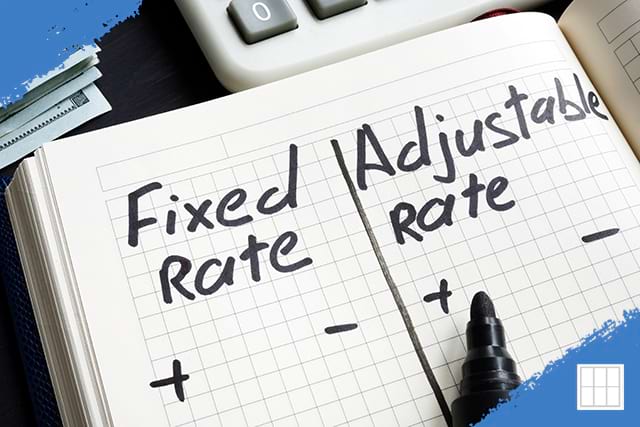On January 29, 2025, the Federal Reserve's Federal Open Market Committee (FOMC) announced its decision…

APR vs. Interest Rate: What You Need to Know
When you’re shopping for a mortgage, you’ll encounter two important terms: the interest rate and the Annual Percentage Rate (APR). Understanding the difference between APR vs. Interest Rate can help you make better financial decisions whether you’re buying a home or refinancing an existing mortgage.
What is an Interest Rate?
The interest rate is the cost you pay annually to borrow money, expressed as a percentage. It directly affects your monthly mortgage payments (mortgage calculator). For example, if you have a 4% interest rate on a $200,000 mortgage, you’ll pay $8,000 per year in interest, or approximately $667 per month, not including principal repayment or other charges. See: Current mortgage rates Kansas City
Interest rates are determined by several factors, including:
- The Federal Reserve: This is the key benchmark interest rate set by the Federal Reserve. It directly impacts the rate banks charge each other for overnight loans. When the Fed raises the federal funds rate, borrowing becomes more expensive throughout the financial system, often leading to higher interest rates on loans, mortgages, and other borrowings for consumers and businesses. By influencing the federal funds rate, the Fed can influence economic activity and inflation. For instance, raising the federal funds rate can help combat inflation by making borrowing more expensive and potentially slowing down economic activity.
- Market Conditions: Supply and demand for mortgage-backed securities can impact interest rates. High demand for these securities typically leads to lower rates, while low demand can cause rates to rise.
- Your Credit Score: Lenders use your credit score to assess your risk as a borrower. Higher credit scores generally result in lower interest rates, while lower scores can lead to higher rates.
- Loan Type and Term: Different types of loans (fixed-rate vs. adjustable-rate mortgages) and loan terms (15-year vs. 30-year) come with varying interest rates. Fixed-rate loans typically have higher rates than adjustable-rate loans at the outset but offer stability over the life of the loan.
What is an Annual Percentage Rate (APR)?
The APR includes the interest rate plus other costs associated with taking out a loan, such as broker fees, discount points, and closing costs. It provides a more comprehensive view of the true cost of borrowing. Because it includes these additional costs, the APR is typically higher than the interest rate.
Components of APR
APR takes into account several factors:
- Interest Rate: The primary component of APR.
- Discount Points: Prepaid interest that can lower your interest rate.
- Loan Origination: A charge, known as “points”, levied by the lender to process your loan application and get the loan ready for funding.
- Lender Fees: Fees charged by the lender for processing the loan.
- Mortgage Insurance: If applicable, the cost of private mortgage insurance (PMI) is included in the APR.
- Other Fees: Any other costs associated with obtaining the mortgage, such as closing costs, application fees, and legal fees.
By considering these factors, APR gives you a clearer picture of the total cost of the loan over its entire term.
Why the Difference Matters
Understanding the distinction between the APR vs. Interest Rate is crucial for several reasons:
Mortgage Interest Rate
The interest rate is crucial because it determines your monthly mortgage obligation. A lower interest rate means lower monthly payments, which can make a significant difference in your budget.
For instance, on a $300,000 mortgage with a 4% interest rate, your monthly principal and interest would be around $1,432. However, if the interest rate were 3.5%, you would pay approximately $1,347. Over the life of a 30-year loan, this difference adds up to substantial savings.
The Annual Percentage Rate
The Annual Percentage Rate (APR) includes the interest rate on a loan plus other fees and charges associated with borrowing the money. This is mandated by the Truth in Lending Act (TILA), a federal regulation enforced by the Consumer Financial Protection Bureau (CFPB).
TILA ensures that borrowers have clear and accurate information about the true cost of their loans. By factoring in these additional charges, the APR provides a more comprehensive picture of borrowing costs than the interest rate alone. Because it considers these extra charges, the APR is typically higher than the interest rate.
How to Use APR vs. Interest Rate When Shopping for a Mortgage
When evaluating mortgage offers, it’s essential to consider both the APR vs. Interest Rate to make an informed decision. Here are some tips on how to use these metrics effectively:
Compare Annual Percentage Rates
When comparing mortgage offers, look at the Loan Estimates APR to understand the true cost of each loan. This helps you see beyond just the monthly payment and consider the total cost over time.
For instance, if you’re choosing between two loans, one with a 6.5% interest rate and 6.8% APR, and another with a 6.6% interest rate and 6.7% APR, the second loan might be more cost-effective in the long run, despite the slightly higher interest rate. The lower APR indicates lower overall costs, including fees and other expenses.
Consider the Loan Term
A loan with a lower interest rate but a higher APR might be a better deal if you plan to stay in the property for a long time. Conversely, if you plan to sell or refinance in a few years, the interest rate might be more important than the APR.
For example, if you’re planning to stay in your home for only five years, you might prioritize a lower interest rate to keep your monthly payments lower, even if the APR is higher. On the other hand, if you’re in it for the long haul, a lower APR could save you more money over the life of the loan.
Evaluate Fees Affecting APR
Pay attention to the charges included in the APR. High charges can significantly increase the overall cost of your mortgage, even if the interest rate is low.
For instance, if two loans have similar interest rates but one has significantly higher charges, the loan with lower fees is likely the better choice. Always ask for a detailed breakdown of the charges included in the APR to understand what you’re paying for.
Additional Considerations for APR vs. Interest Rate
When shopping for a mortgage, it’s also essential to consider other factors that can impact your overall cost and financial situation:
Fixed-Rate vs. Adjustable-Rate Mortgages
Fixed interest rate loans offer the stability of a consistent interest rate and monthly payment over the life of the loan. This can provide peace of mind, knowing that your payments won’t change.
Adjustable-rate mortgages (ARMs) typically start with a lower interest rate than fixed-rate loans, but the rate can change periodically based on market conditions. This means your monthly obligation can increase or decrease over time. ARMs can be a good option if you plan to sell or refinance before the adjustable period begins.
The Mortgage Loan Term
The loan term, or the length of time you have to repay the mortgage, also affects your interest rate and APR. Shorter terms, such as 15 years, usually come with lower interest rates but higher monthly payments. Longer terms, like 30 years, have higher interest rates but lower monthly payments.
Consider your financial goals and budget when choosing a loan term. A shorter term can save you money on interest over time, while a longer term can provide more manageable monthly payments.
Loans with Prepayment Penalties
Some mortgages come with prepayment penalties, which are fees charged if you pay off your loan early. These penalties can offset the savings you’d gain from refinancing or selling your home before the loan term ends.
Ask your lender about any prepayment penalties and consider how they might affect your plans. If you expect to sell or refinance soon, look for a loan without these penalties.
Conclusion to APR vs. Interest Rate
Understanding the difference between APR vs. Interest Rate is essential for homebuyers and homeowners looking to refinance. While the interest rate affects your monthly payments, the APR provides a more comprehensive picture of the total cost of your mortgage. By considering both, you can make informed decisions that align with your financial goals.
If you have any questions about mortgage rates or need help finding the best loan for your needs, contact Metropolitan Mortgage today. Our experienced team is here to guide you every step of the way.



